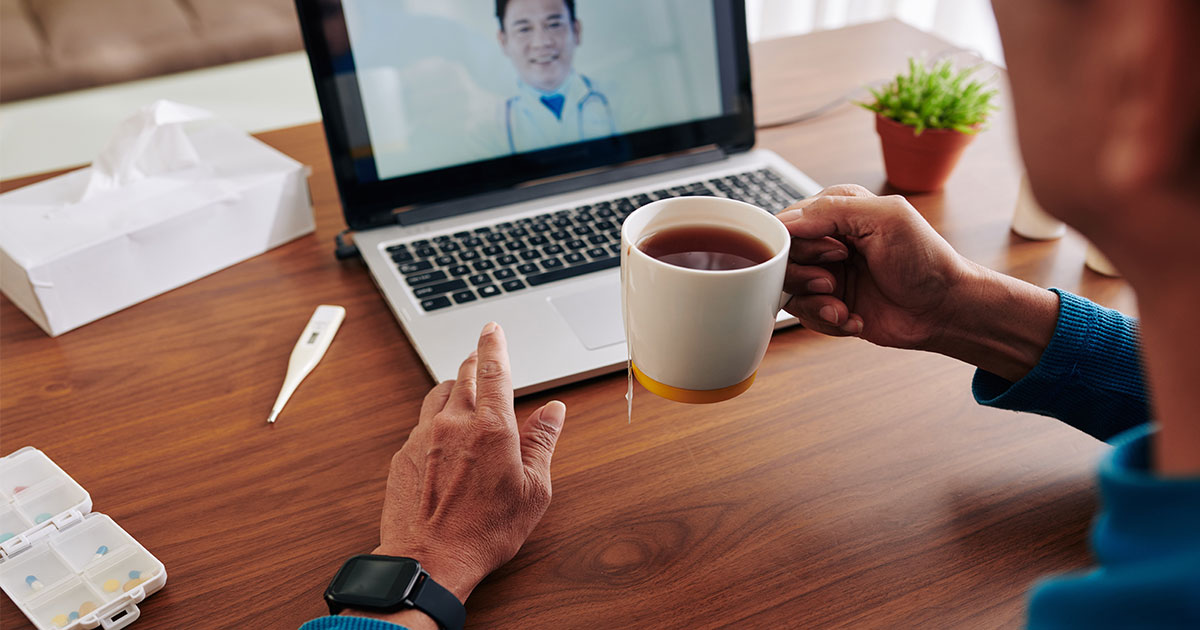Convenience
For a lot of providers, the first thing that comes to mind when they think about the benefits of practicing telemedicine is how it allows them to provide care to patients who couldn’t otherwise access it. For some, it’s about necessity. Their patients might live in remote areas where there is a shortage of specialists.
While I’m passionate about increasing access to care for those who couldn’t otherwise see a specialist, my primary reason for practicing telemedicine is convenience, both for me and my patients. Most of my patients live in urban and suburban areas in close proximity to my practice, but they appreciate the convenience telemedicine appointments afford them. They’re typically under Medicare age and busy in the workforce, so cutting out the travel and wait time associated with an in-office encounter is appealing to them. Their encounters are almost entirely follow-up visits in which a physical examination is not important.
As a urologist, the majority of my practice is andrology, and the diagnoses are often male infertility, erectile dysfunction and hypogonadism. I sometimes see cases of urinary calculi. Through telemedicine, I can review laboratory or imaging results, provide new treatment plans and confirm or modify existing ones. Occasionally, I will see new patients via telemedicine if they are located far away and desire to initiate a consultation prior to traveling to see me. Usually these are andrology patients, and their care typically lends itself well to telemedicine. My telehealth encounters are almost entirely follow-up visits in which a physical examination is not important and an evaluation of the urine or the post-void residual is not necessary.
Reimbursement
I practice in Ohio, where there are parity laws stipulating telemedical encounters must be reimbursed by PPO payers on par with in-office encounters. I utilize time-based billing codes to charge for my telemedical encounters accompanied by a GT modifier. It’s important to note, though, telemedicine reimbursement laws vary by state.
The payors for telemedical encounters in my practice are a mix of fee-for-service PPO payments and capitation payments. Occasionally, a Medicare fee-for-service patient will pay out-of-pocket for the encounter due to the convenience, but prior to the pandemic, Medicare would not cover these encounters, as they are not providing care across a great enough distance to a qualified location. With regards to capitation payments, I will already have been reimbursed, so the means through which I encounter the patient is at my discretion.
Due to COVID-19, certain telehealth legislation has been temporarily been lifted and reimbursement has improved. There’s also proposed legislation to make these changes permanent. To keep up with the most current changes, I recommend clinicians visit the Center for Connected Health Policy website.
Scheduling
The software platform I use is internet and subscription based, and, conveniently, it integrates with my scheduling software. The platform is fairly intuitive and provides a virtual waiting room for the patients where they can determine if I am online and am aware they are waiting to start the encounter. I can also see the status of whether or not my patients in the cue are online and ready to be seen. The patients are given appointment slots just as they would be if they were physically in the office, but instead of arriving early and waiting in a waiting area or room, they are wherever they choose to be that has adequate broadband or cellular connectivity, and they can wait with their device, whether it be a phone, laptop or tablet, online but continue their activities until my entry into the virtual exam alerts them. This has been particularly beneficial during the pandemic, with some patients hesitant about attending in-office appointments due to fears of contracting COVID-19. In fact, according to a LocumTenens.com consumer report, 45% of patients surveyed felt either somewhat or very uncomfortable visiting a doctor for preventive care at the peak of COVID-19 in their state. When asked to describe their telehealth utilization pre-pandemic, 66% reported they never used telehealth services, but 53% reported using telehealth services either sometimes or whenever possible during the pandemic. Scheduling virtual visits can help alleviate patient fears.
Although the patients have the ability to be seen from a variety of locations, I prefer to provide the encounters from my office due to privacy concerns, and I highly encourage my patients to be at home during their appointment. Some patients may feel comfortable participating in the appointment from more public places, but this is risky for the clinician; it’s important to be even more cognizant of HIPAA stipulations during telemedicine appointments.
I schedule all telemedicine encounters together in a dedicated afternoon once a week. I find placing all the telemedicine encounters together results in a smoother delivery of care compared with interspacing them with in-office visits, as these can be much less predictable in terms of time spent per patient. Furthermore, the telemedicine patient is not as “captive” as the in-office patient whose whereabouts are monitored by the medical staff. The telemedicine patient may be moving or need to move to a location not conducive to an encounter if his or her visit is delayed inordinately. I find keeping the telemedicine visits, which tend to be much more predictable than face-to-face visits, back-to-back enables on-time encounters and very little cancellations or virtual “walk outs.”
Technical support is provided by the subscription service and is available immediately during the encounters if there are any technical issues.
Documentation
I utilize my electronic health record (EHR) the same way I would with an in-person visit. There is a picture of the patient within my EHR screen as I populate the chart with information. I find the documentation associated with telehealth visits to be much more convenient than the documentation associated with face-to-face visits. Being on the computer as the appointment takes place allows me to take notes as I go, rather than having to go back and do it at the end of the day or when I have time between face-to-face appointments.
Telehealth encounters are more convenient to select patients and also less resource intensive to my practice. I have been very satisfied with the process of utilizing telemedicine, and I have been pleased to see a progressive improvement in connectivity, and therefore the technical quality of the encounters, over time. Telehealth and technology have played important roles in my practice for years. Due to the pandemic, many other clinicians, healthcare organizations and patients across the country have seen the value in telehealth firsthand, and I’m confident its significance and utilization will only continue to increase in the coming years.

About the author
Errol Singh
M.D. F.A.C.S.
Errol Singh, M.D. F.A.C.S. is CEO & Founder of PercuVision, Capital Urology and a practicing urologist for over 30 years. Dr. Singh is a member of the AUA Telehealth Task Force and an advocate for telehealth in urology. PercuVision and LocumTenens.com recently partnered to improve access to urological care through telemedicine.





